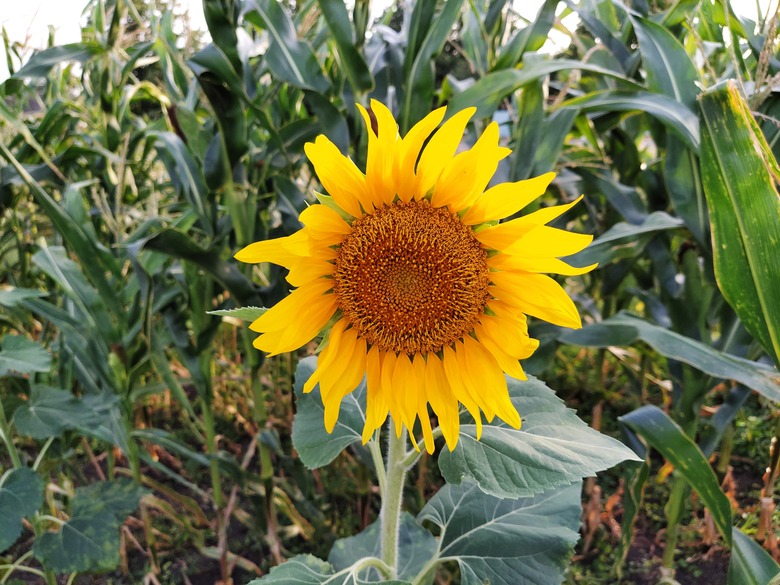What's The Difference Between Sunflowers And Weeds?
What makes a weed a weed? Ralph Waldo Emerson is famously credited with describing a weed as "a plant whose virtues have not yet been discovered." Although the virtues of the sunflower are widely recognized, the attractive plant is also still considered a weed in some contexts. Not everyone may think of this plant as a weed, but some areas do classify it in this way.
Tip
Sunflowers spread quickly and are adaptable and often opportunistic plants that prosper in a variety of environmental and cultural conditions. In some areas this gets them categorized as weeds.
Sunflower Habitat and Form
Sunflower Habitat and Form
The common sunflower (Helianthus annuus) is a sturdy annual that is native to prairies and meadows in the western United States, Canada and Mexico. It sends up thick branching stems that can reach a height of between 5 and 10 feet. Its triangular or heart-shaped leaves are hairy and coarsely textured, and they can grow up to a foot long. The plant produces flower discs consisting of a circular cluster of small flowers in the center surrounded by a ring of ray flowers around the edge of the disc.
Sunflower Seeds and Spread
Sunflower Seeds and Spread
Each one of the tiny flowers in the sunflower's central flower disc produces a hard-shelled, oil-rich seed that's a favorite food of birds and other wildlife. Because they attract animals so effectively, the seeds are readily disbursed, and they may overwinter in the soil. When left undisturbed, these sunflower seeds will sprout in the spring into fast-growing plants, and the life cycle will continue through another season.
The common sunflower's tolerance of heat and cold, drought and poor soils means few locations exist where it won't flourish. It is an extremely adaptable plant. When you grow sunflowers, it's common to find stray seedlings popping up in the spring well away from the place you intended for them to stay.
Invasiveness and Weed Status
Invasiveness and Weed Status
Most people have seen photos of endless sunflowers at one time or another. Common sunflowers often grow wild along roadsides and fence lines and in other untended areas. Its association with the native prairie landscape has led Kansas to adopt the common sunflower as its state flower, but when the prolific plant shows up where it's not wanted, such as in farm fields and residential gardens, many gardeners consider it a weed.
Although the sunflower is revered in Kansas, it's defined as an undesirable species in many states and in parts of Canada, and in Iowa it's listed as a secondary noxious weed, an official designation of its nuisance status. The designation of weed is by no means universal, but it is a fairly common one.
Sunflower Control in the Garden
Sunflower Control in the Garden
It's not difficult to control the spread of unwanted sunflowers in a home garden if you don't want them popping up everywhere. Compared to many other types of weeds, sunflowers don't produce seedlings that tend to be large and easy to spot and pull up.
That said, these plants are deeply rooted once they reach a larger size. This means it's important to get to them early before they're established and difficult to remove. With a little diligence and attention, it isn't too hard to prevent them from overwhelming your outdoor space.
